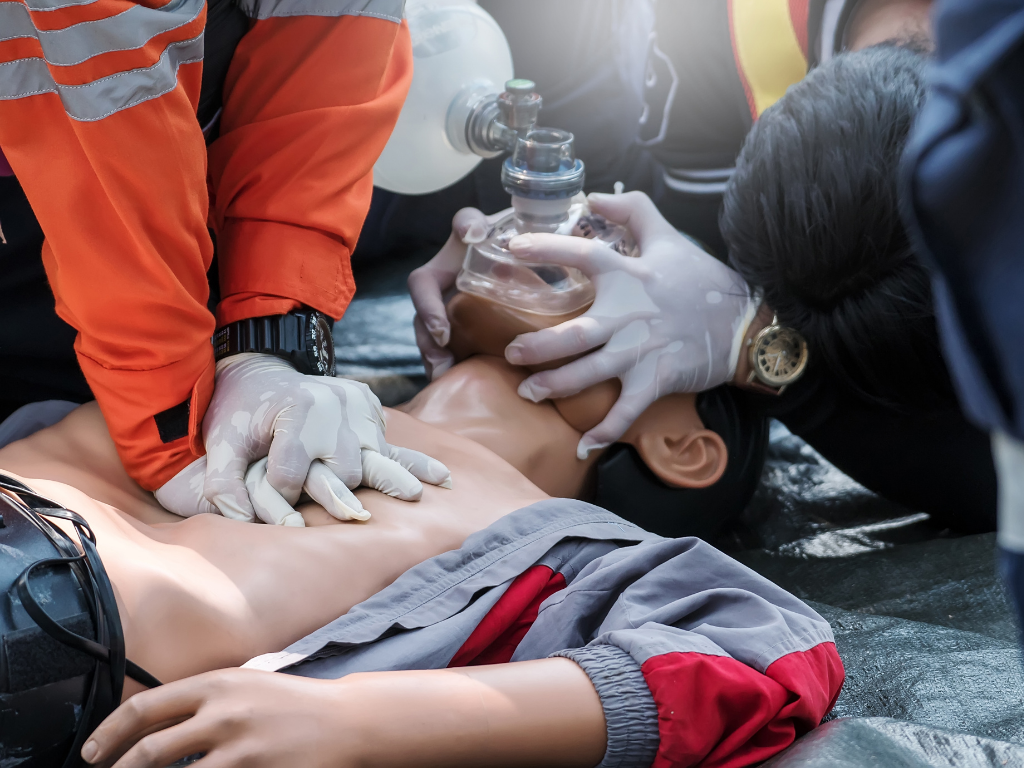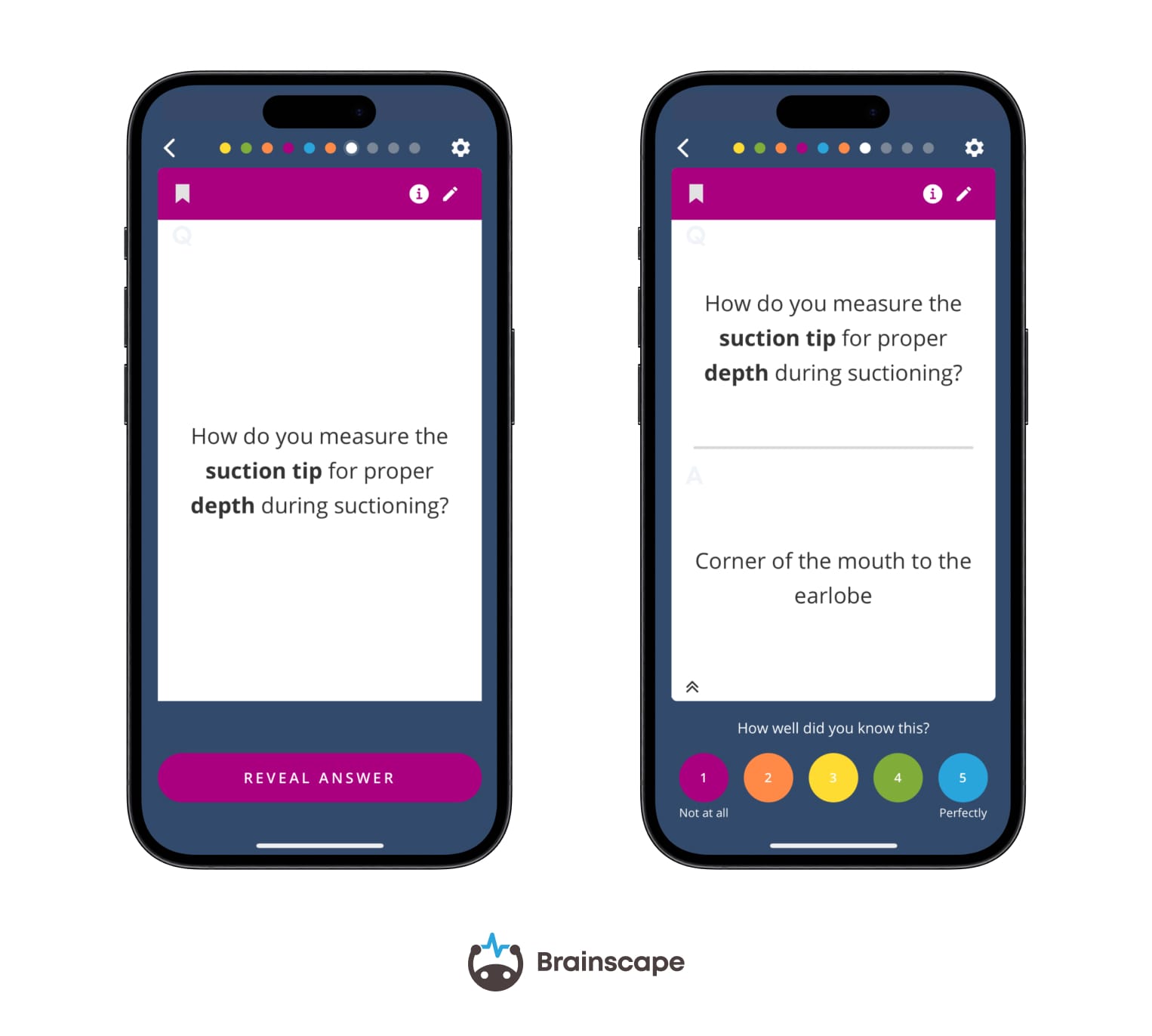Jumping in an ambulance or helicopter to be the first on the scene of an accident or an acute illness or an injury; rushing to the side of the fallen to assess their condition and administer treatment to stabilize them. You are mentally resistant to things that would make the ordinary person gag or faint (or both), and you’re physically trained for long days and tough conditions. But at night, you fall asleep knowing that for someone that day—perhaps many people—you were the difference between life and death.
This is the life of a paramedic, and if it’s your goal to become one, then you’re in the perfect place to have all of your questions answered, including:
- How to become a paramedic?
- How long does it take to finish paramedic school?
- How hard is paramedic school?
Together with a team of EMS experts, lead by Jesse Owens (NRP, FP-C), we’ve put together this guide on how to become a paramedic so that you can take your next step armed with all the information you need!
What Steps Do I Need To Take To Become A Paramedic?

Step 1: Earn A High School Diploma
Your journey on the road to becoming a paramedic begins with a sound education. You’ll need to earn a high school diploma or GED credential. Does it matter if you previously dropped out of high school? Absolutely not. So long as you have earned your GED credential, you’ll have met this first criterion.
And if you haven’t got your GED? Well then, get started! The best time to plant a fruit tree is today!
Step 2: Get CPR-Certified

Your next step is to get your CPR (cardiopulmonary resuscitation) certification because you’ll need that to gain entry into an EMS program. It’s pretty easy: simply apply to organizations such as the American Red Cross or the American Heart Association, which regularly provide CPR training and certification.
Once you have that paper in hand, you should be able to apply for your EMT training.
Step 3: Complete EMT Basic Training
A-ha! Now, this is the first major step on your path to becoming a paramedic: complete your EMT training. You see, all paramedics begin their career by qualifying as an EMT. Then, they take that next step by enrolling for paramedic schooling.
An EMT certificate program consists of 120 to 150 credit hours, but how long it takes you to complete that depends entirely on your lifestyle and other commitments. Some students get their EMT training done in as little as three weeks while others take a full year, perhaps while working part- or even full-time. It’s up to you, really!
Step 4: Pass The NREMT Exam To Become Certified
Passing the National Registry of Emergency Medical Technicians or NREMT exam is the final hurdle you must jump in order to become a qualified, certified EMT. The NREMT exam consists of a cognitive (written, knowledge) and a psychomotor test (practical, skills).
Armed with this certification in hand, you can start working in EMS.
Step 5: Get Work Experience As An EMT
Now, it is highly recommended that you take at least six months to get quality hands-on experience as an EMT. In fact, most EMS professionals work as an EMT for a few years before they enroll in paramedic schooling, which adds a hefty 1,200 to 1,800 training hours to their to-do list.
Also, make sure you understand your paramedic program’s requirements: some will accept EMT-certified individuals without any experience, while others require a minimum work experience of six months. Do your research so that you don’t get derailed.
Side question: Should you bother with experience if your paramedic school accepts EMT certification only? Or should you spend time in the field? Our recommendation is that you work for six months to a year (or longer, if you feel you need it), and here’s why:
Practical, hands-on experience in real-world emergency situations creates permanent memories out of all that medical content you spent so much time learning in EMT class. It hones those emergency care skills to a razor’s edge (because people’s lives depend on you being sharp). And, overall, it prepares you for life as a paramedic in a way that no amount of classroom training can.
So, make room in your ambitious plans for that experience, and it will pay off immensely when you start your paramedic schooling.
Step 6: Enroll In Paramedic Schooling
With some experience under your belt—or not … that’s entirely up to you—you’ll be ready to enroll for your paramedic schooling! When hunting around for a paramedic program, make sure that the one you choose is accredited by the Commission on Accreditation of Allied Health Education Programs (CAAHEP).
And then, of crucial importance, as soon as you have registered and paid your tuition fee, start studying! Paramedic schooling is like a firehose of information that comes at your face at 100 miles per hour. My advice is to spend several weeks beforehand learning (and memorizing) as much of the content as possible before you even set foot in that classroom.
The next step explains how you can do that …
Step 7: Use Flashcards To Help You Ace Your Paramedic Schooling
Now here’s the secret sauce to really nailing your studies. Use a digital flashcard app like Quizlet or Brainscape to learn and memorize that all-important paramedic content. Why? Because smart flashcards with spaced repetition are scientifically proven to help you learn TWICE as efficiently as any other study method!

Every year, about half of the candidates who sign up for paramedic schooling drop out because they are overwhelmed by the volume of information and the scathing pace at which it’s covered. From the scores of medications you need to learn in pharmacology to dictionaries’ worth of complex cardiology terms and anatomy, your job is to learn as much of the content as possible BEFORE arriving for your first day of paramedic schooling.
Digital flashcards take the guesswork out of wondering what to study next by automating the timing at which you return to a flashcard. They use a personalized algorithm to help you memorize thousands of facts as quickly as possible. In fact, they're proven to significantly increase test scores in medical school!
Step 8: Pass The NREMT-P Exam To Become Certified
Just like with EMTs, paramedics need to pass both the written (cognitive) and psychomotor (practical skills) portions of the National Registry exam—the NREMT-P—in order to become certified and apply for jobs. Once you’ve passed the NREMT-P exam, your sole remaining responsibility will be to …
Step 9: Throw A Party To Celebrate! You Did It!
Once you’ve passed the NREMT-P exam, you are officially a certified paramedic! And it’s our most ardent recommendation that you celebrate that in whichever style you prefer, whether it’s a weekend away, drinks with friends, or a night of “Netflix & Chill” with a tub of Ben & Jerry’s ice cream. You’ve earned it.
How Long Does It Take To Become A Paramedic?

So now that I’ve given you a step-by-step guide on how to become a paramedic, the next obvious question is: how long does all of this take?
Well, how long it takes to become a paramedic depends entirely on what your starting point is (High School graduate versus certified EMT) and how accelerated your paramedic schooling is.
But let’s assume you’re starting out with your EMT certification and are considering paramedic school. The short answer is 1,200 to 1,800 credit hours. The long answer is anywhere between 18 to 24 months, depending on whether you study part-time or full-time (and how you parse that training out).
And, Finally, How Hard Is Paramedic School?
Our resident EMS expert Jesse Owens (NRP, FP-C) gets asked this question all the time: how hard is paramedic school? The answer is … well, how long is a piece of string?
I mean, it’s such a relative question, isn’t it?
The people who work diligently to learn the content before class and who keep up a healthy cadence of daily study and review will find paramedic schooling to be manageable.
Half of all incoming candidates, however, will end up dropping out not because they aren’t prepared to work hard … but because they find the paramedic program so incredibly overwhelming. (Which emphasizes the importance of going into school having already learned as much of the content as possible.)
Now, a 50% drop-out rate is pretty scary to incoming trainees, but here’s the thing: if you prepare for your paramedic schooling, you will be just fine. Make a plan, use a digital flashcard app like Mochi or Brainscape, and you'll have all the tools you need to conquer the mountain of information and save lives for a living!
Additional Reading
- EMT Jobs: how to get one and be successful!
- Paramedic vs nurse: what's the difference?
- How to get the best paramedic jobs
References
American Heart Association: To be a relentless force for a world of longer, healthier lives. www.heart.org. (n.d.). https://www.heart.org/
Assuring the quality of Health Sciences Education since 1994. CAAHEP. (n.d.). https://www.caahep.org/
Karpicke, J. D. (2012). Retrieval-based learning: Active retrieval promotes meaningful learning. Current Directions in Psychological Science, 21(3), 157-163.
Kerfoot, B. P., Shaffer, K., McMahon, G. T., Baker, H., Kirdar, J., Kanter, S., Corbett, E. C., Berkow, R., Krupat, E., & Armstrong, E. G. (2011). Online “spaced education progress-testing” of students to confront two upcoming challenges to medical schools. Academic Medicine, 86(3), 300–306. https://doi.org/10.1097/acm.0b013e3182087bef
National Registry of Emergency Medical technicians. National Registry of Emergency Medical Technicians. (n.d.). https://www.nremt.org/
Red Cross CPR training. Red Cross. (n.d.). https://www.redcross.org/take-a-class/cpr
